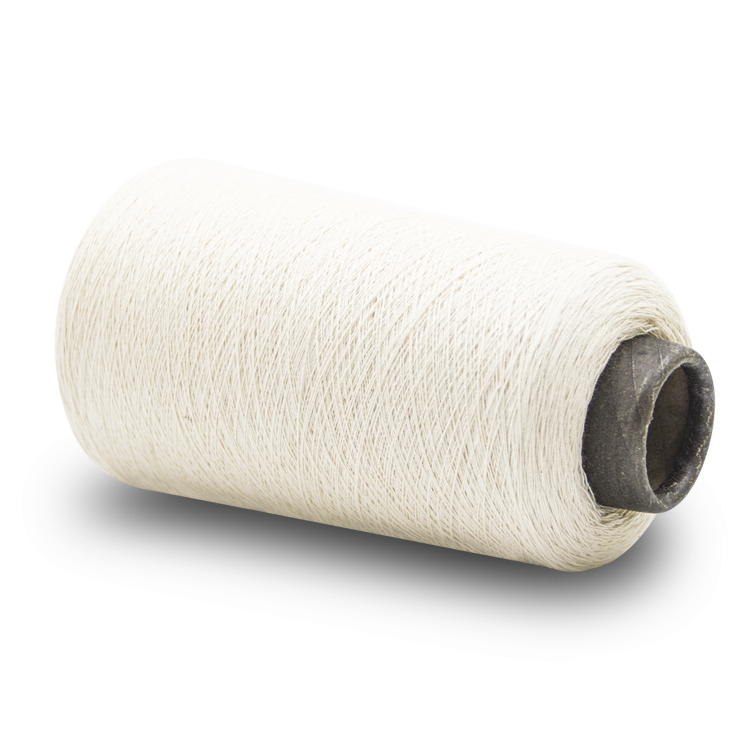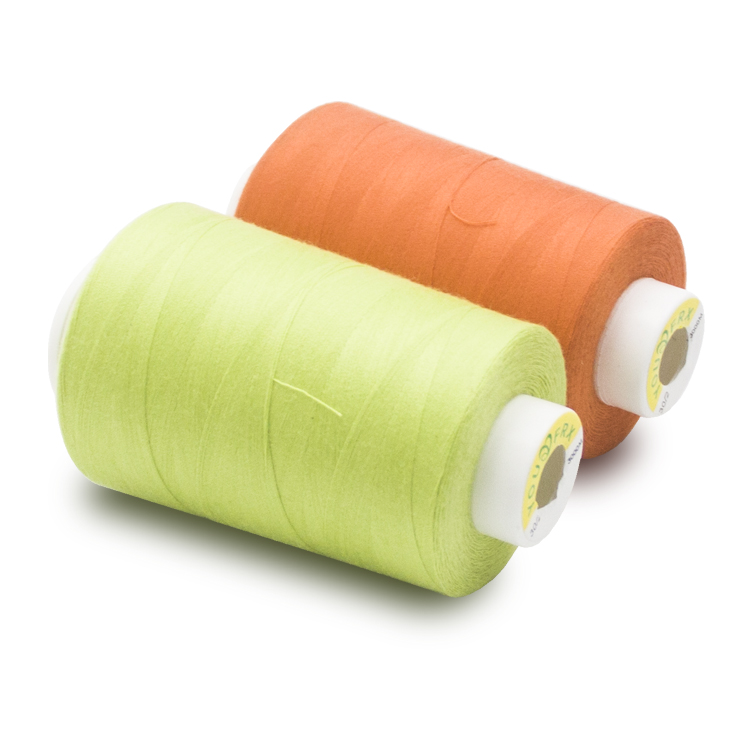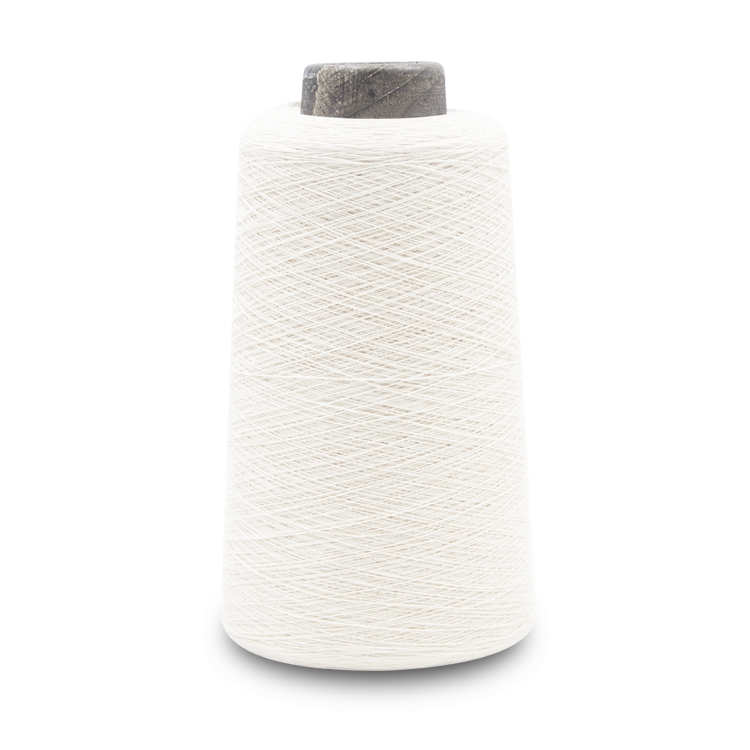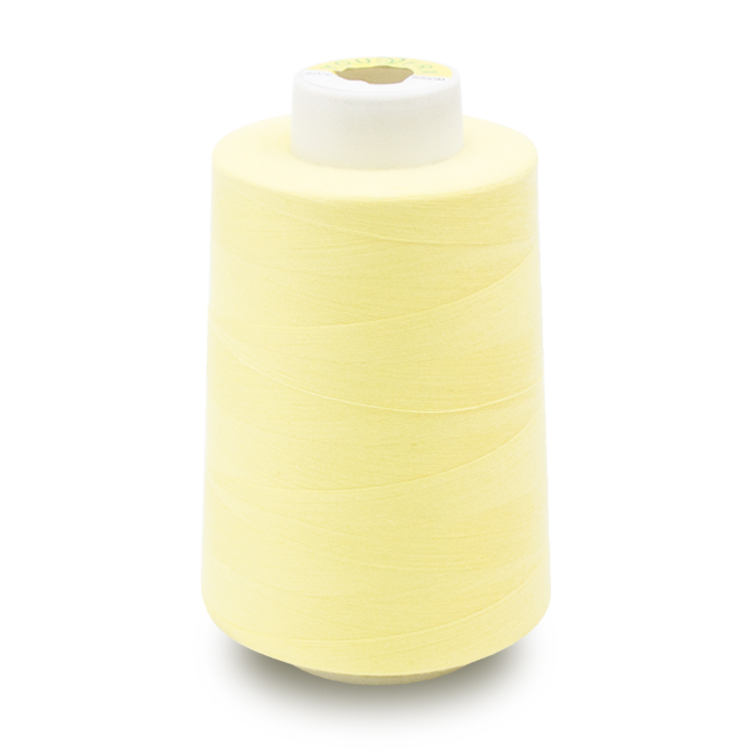
What problems should be paid attention to in card sliver yarn thread quality control(2)
(continued above)
The control of neps and impurities should be based on the characteristics of raw materials, cotton roll quality and yarn thread quality requirements, starting from the process allocation, give full play to the dust removal function at the rear belly and cover. Its main measures are:
(1) Configuration of yarn thread carding process:
Combining the yarn thread carding process with "four edges, one precision" and "tight gauge" can increase the percentage of single fibers yarn thread in cotton web, promote the parallel stretching of fibers, make the fibers and impurities fully separated, and improve the ability of carding machine to remove neps and impurities.
(2) Early and timely miscellaneous:
The yarn thread cleaning and carding processes should be rationally divided, and the various parts of the yarn thread carding machine itself should also be rationally divided.
The principle of early drop and less breakage should be applied to the impurities which are generally large and easily separated.
The impurities with strong adhesion, especially those with long fibers yarn thread, should not fall early when they are not separated from the fibers yarn thread.
It is more advantageous to remove them after full carding on the yarn thread carding machine.
When the maturity of raw cotton is poor and there are more impurities with fiber, the burden of noil and impurity removal of carding machine should be increased appropriately.

The roller part of yarn thread carding machine is the key miscellaneous area. The broken seeds, stiff petals and impurities with short fibers yarn thread should be discharged in this area, so as to prevent the impurities from being smashed or impacted between the needles and teeth of cylinder.
Therefore, in addition to a small amount of adhesion impurities, the taker-in part should fall early and fall more.
Reasonable allocation of taker-in speed and rear belly technology can improve the efficiency of taker-in part and reduce the clutter of raw sliver yarn thread.
Cylinder and cover are suitable for removing fine impurities, neps and short fibers with different length of fibers yarn thread.
The size of cylindrical and cover clothing and the distance between the two needle surfaces, the position of the top of the front cover, the distance between the front cover and the cover and the speed of the cover also affect the amount of neps and impurities in sliver.
For raw cotton with poor maturity and more harmful defects, special attention should be paid to the elimination of knots in the cover work area.
(3) Reducing twist fibers yarn thread:
According to the elasticity of fiber yarn thread composition in neps, they are divided into loose neps and tight neps, most of which contain impurities.
A NEP is generally composed of dozens of fibers yarn thread, most of which are thin-walled fibers yarn thread with low maturity coefficient.
These fibers yarn thread have small rigidity and high moisture regain. Because of the impact and friction of the taker-in roller and repeated rubbing between the cylinder covers, they are easy to twist and form Neps on the yarn thread carding machine.
In addition, when the cylindrical, flat and doffer pin teeth are blunt or burr, the fibers yarn thread can not be transferred repeatedly between the two needle surfaces, and easily float between the two needle surfaces, which are rubbed by other fibers to form more neps.
The distance between taker-in roll and cylinder is too large and the serrated teeth are not smooth.
It is easy to cause bad stripping between taker-in roll and back flowering of taker-in roll, and the neps increase obviously.
Cylinder needle surface is rough due to crushing, there are oil stains and rust spots on the needle surface, and the distance between cylinder and doffer is too large.
It is easy to make cylinder twist and increase neps.

(4) Strengthen the control of temperature and humidity:
Temperature and humidity also have a great influence on neps and impurities of yarn thread.
When the moisture regain of raw cotton and cotton roll is low, impurities fall easily, neps and bundles can also be reduced.
The moisture regain control range is 8%-8.5% for cotton roll and 10%-11% for raw cotton.
Yarn thread carding workshop should control low relative humidity, generally in the range of 55%-60%, so that the fiber can release moisture, increase the rigidity and elasticity of the fiber, reduce the friction between the fiber yarn thread and the needle teeth and the filling between the teeth.
But the relative humidity is too low, on the one hand, it is easy to generate static electricity, cotton web is easy to break or break, especially in yarn thread spinning chemical fibers, this phenomenon is more obvious, on the other hand, it will reduce the moisture regain of raw sliver, which is not conducive to the drafting of the later process.
C. Control of sliver evenness:
The unevenness of sliver yarn thread is divided into two kinds: the unevenness of sliver weight and the unevenness of sliver yarn thread evenness.
The former represents the difference of sliver length (5m) and the latter represents the unevenness of sliver per meter.

(1) Control of non-uniformity of sliver yarn thread:
Raw sliver evenness affects yarn thread weight evenness, evenness and strength.
The main factors affecting the evenness of raw sliver are carding quality, the evenness of fiber transfer from cylinder to doffer, mechanical state, cotton net mottle, hole and edge breakage.
When the combing quality is poor, there are more residual bundles or clusters of aggregated fibers with different sizes in the cotton web, which can form mottled or scaly defects.
Bad mechanical condition, such as inaccurate gauge, periodic variation of gauge caused by vibration of taker-in roll, cylinder and doffer, bad meshing of coiler gear and so on, will increase evenness.
In addition, if the spacing of cotton stripping roller is inaccurate, the yarn thread drafting of each part between Dough and cotton winder and the tension drafting of cotton web are too large, and the sliver quantity is too light, etc. will also increase the evenness of sliver.
(2) Control of the unevenness of yarn thread sliver weight:
There is a certain relationship between yarn thread sliver weight irregularity and spinning weight irregularity and weight deviation.
The unevenness of sliver weight should be controlled from two aspects: Internal unevenness and external unevenness.
The main factors affecting the unevenness of sliver weight are the unevenness of cotton roll weight, the difference of noil rate among different machines of yarn thread carding machine, and the poor mechanical condition. In order to control the inner unevenness of yarn thread sliver weight, the unevenness of cotton roll weight should be controlled to eliminate the sticky layer, holes and poor rewinding joint of cotton roll. In order to reduce the external unevenness of yarn thread sliver weight, it is necessary to unify the distance and dropping rate of each carding machine spinning the same linear density yarn thread, prevent the misuse of drafting shift gears, and do well the condition maintenance of equipment, so as to ensure the good mechanical condition.




